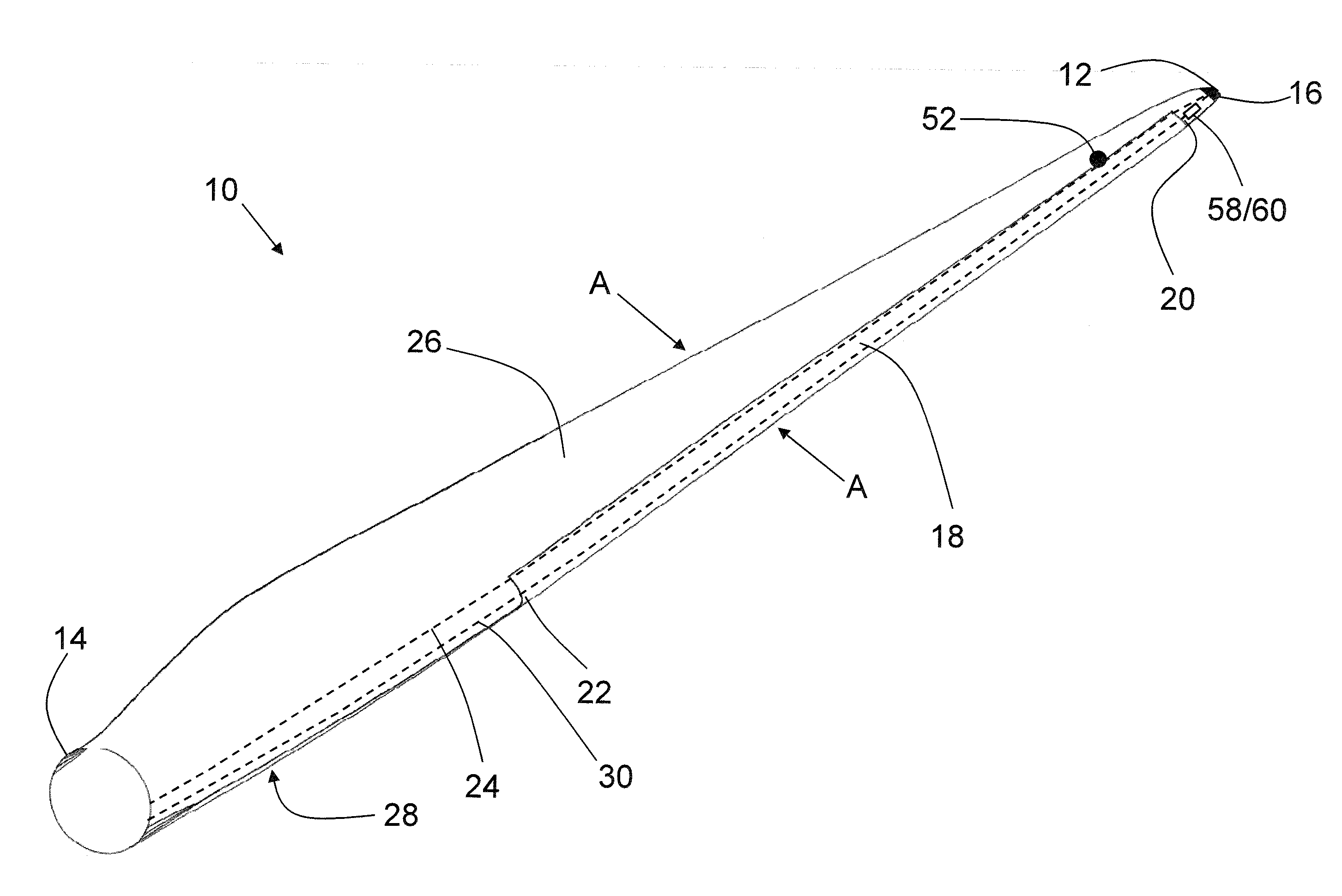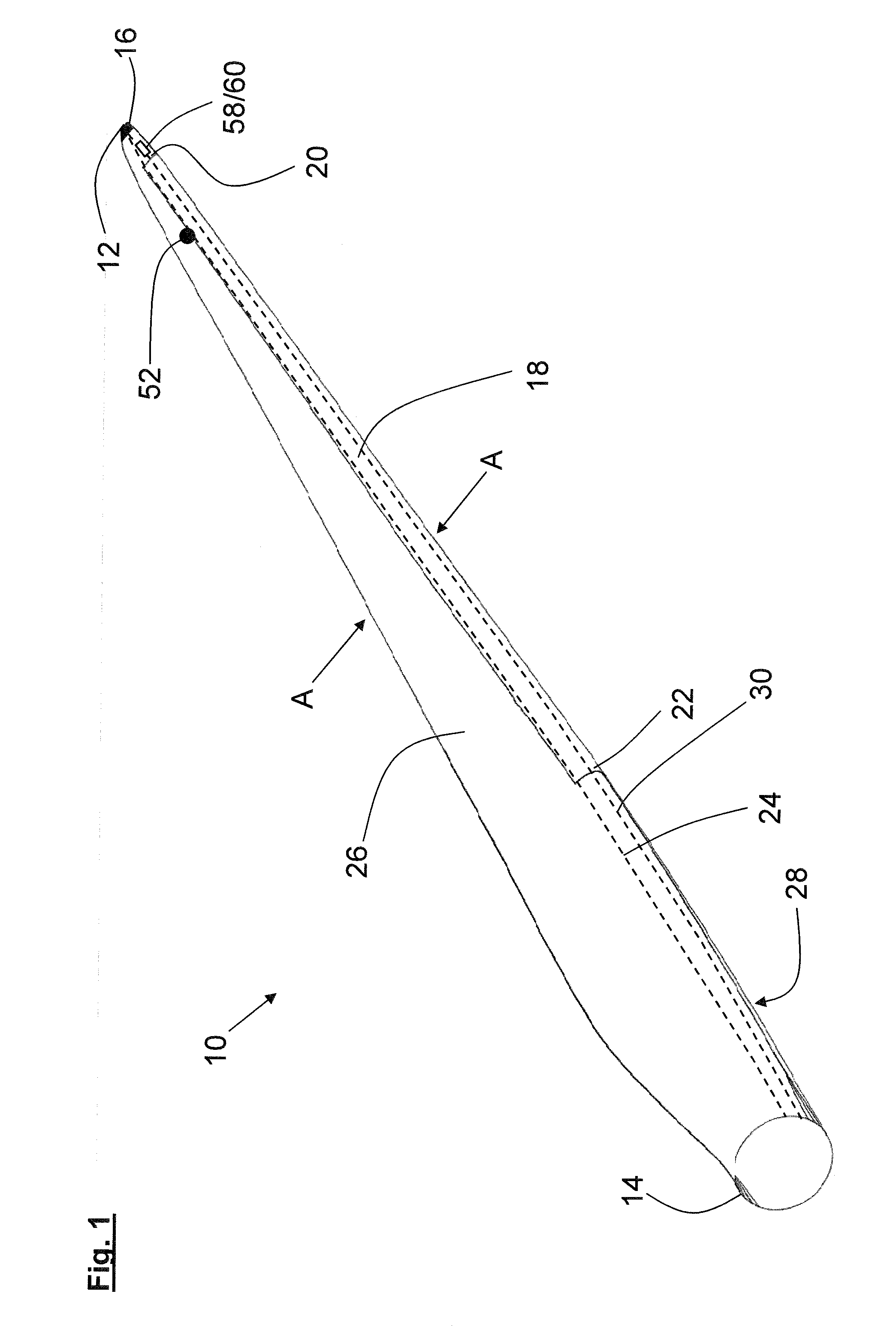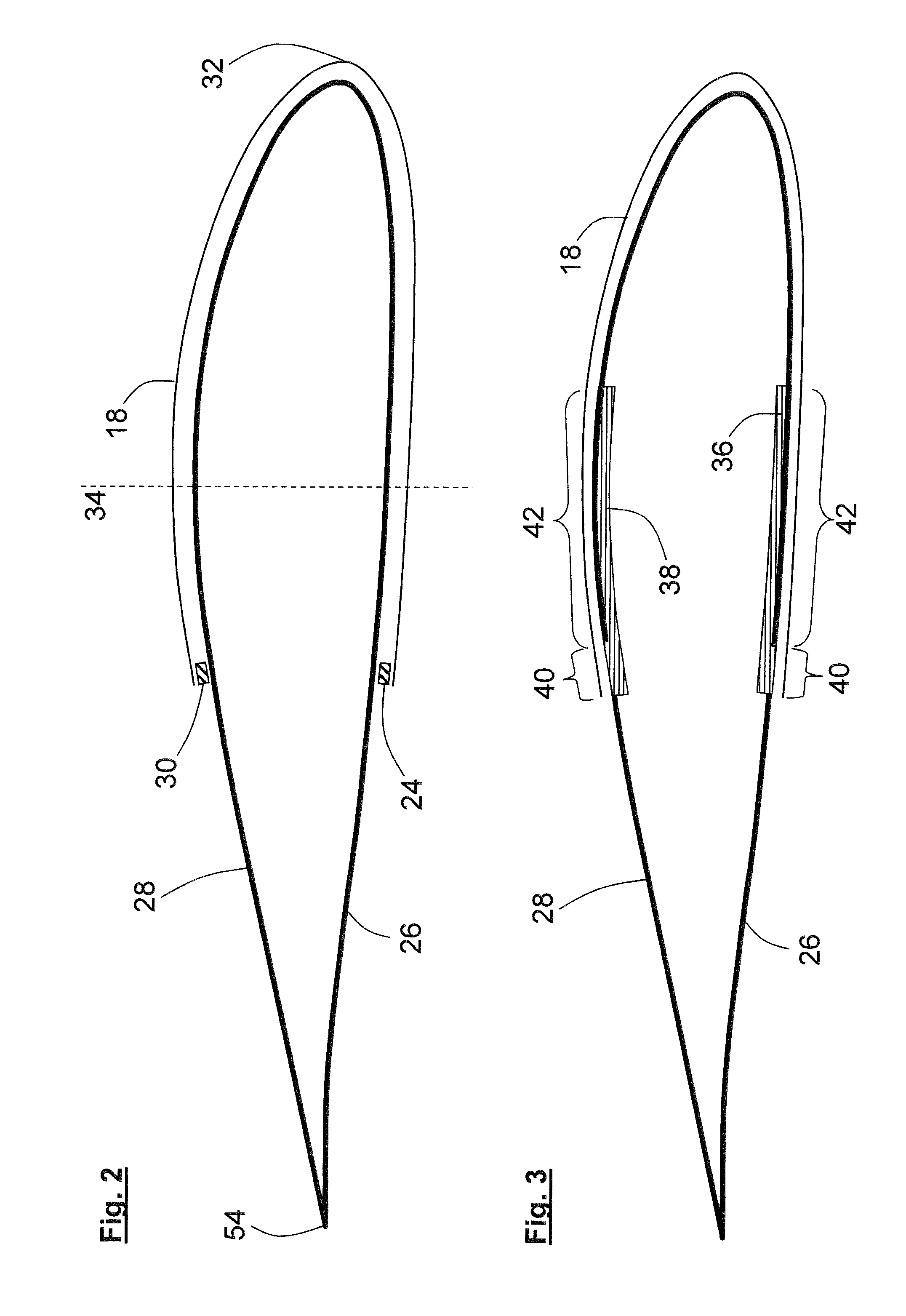Wind turbine rotor blade having an electrical heating device and a plurality of lightning conductors
a technology of electrical heating device and wind turbine, which is applied in the direction of liquid fuel engines, vessel construction, marine propulsion, etc., can solve the problems of wind turbines being affected by lightning strikes, heating of heating devices, potential differences between lightning conductors and heating devices, and electrical conductors connected to heating devices. , to achieve the effect of preventing damage, simple configuration and effective equipotential bonding
- Summary
- Abstract
- Description
- Claims
- Application Information
AI Technical Summary
Benefits of technology
Problems solved by technology
Method used
Image
Examples
Embodiment Construction
[0043]The wind turbine rotor blade 10 shown in FIG. 1 has a rotor blade tip 12 and a rotor blade root 14. A lightning protection receptor 16, which forms the rotor blade tip 12, is arranged in the region of the rotor blade tip 12. The rotor blade 10 has a pressure side 26 facing the viewer and a suction side 28 remote from the viewer.
[0044]An electrical heating device 18 is arranged in the region of the profile leading edge of the rotor blade 10. It has a rotor blade tip side end 20 and a rotor blade root side end 22 and extends over a large proportion of the length of the rotor blade 10 up to close to the rotor blade tip 12.
[0045]FIG. 1 also shows a first lightning conductor 24 which has a metallic conductor. The metallic conductor extends from the rotor blade root 14 up to the rotor blade tip 12 and is connected there to the lightning protection receptor 16. As shown in FIG. 1, the first lightning conductor 24 runs substantially adjacent to a rim of the electrical heating device 1...
PUM
 Login to View More
Login to View More Abstract
Description
Claims
Application Information
 Login to View More
Login to View More - R&D
- Intellectual Property
- Life Sciences
- Materials
- Tech Scout
- Unparalleled Data Quality
- Higher Quality Content
- 60% Fewer Hallucinations
Browse by: Latest US Patents, China's latest patents, Technical Efficacy Thesaurus, Application Domain, Technology Topic, Popular Technical Reports.
© 2025 PatSnap. All rights reserved.Legal|Privacy policy|Modern Slavery Act Transparency Statement|Sitemap|About US| Contact US: help@patsnap.com



